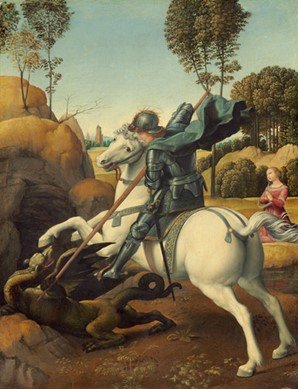Millennial Kingdom + Mud Flood and the Wastelands of the Seraphim
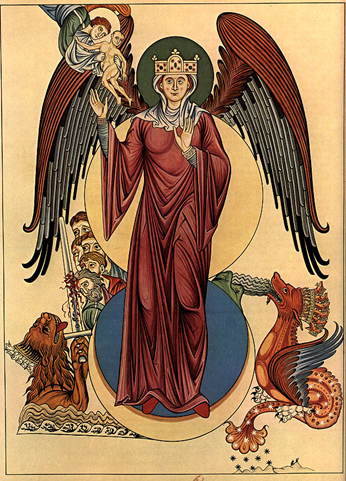
IN my last Millennial Kingdom + Mud Flood paper, I had purposely neglected to comment upon the seraphim dragons who escorted Chanok up to heaven. They make an appearance in the rather short text, ‘Account of Chanok’. If you need a refresher, everybody’s eyeballs melted, like something from Raiders of the Lost Ark. The jury is still out on whether or not it’s commentary upon a Revelation 20 society. That is, after the one-thousand-year kingdom of Mashiach on earth, where we presently find ourselves. I had implied that it may very well be. It’s undoubtedly describing the here and now which, when you think about it, simultaneously makes it post mud flood. Some may have interpreted my oversight as neglect. Malpractice even. But I was only thinking ahead. This is a progressive conversation, and I knew where it was headed.
Perhaps you didn’t take the time to read my last paper and are already confused. Return of Rome. Not a problem. It’s time you get caught up to speed. I’m referring to this passage right here.
4 After he [Chanok] said this, the multitude took up arms to kill him. Suddenly, a whirlwind came from heaven, as a storm of fire. Within the whirlwind of fire were seraphim, dragons of the power of Elohim. All who saw this became blind in that moment for their eyes were burned from their sockets.
The Account of Enoch 1:4
Epic. So much better than the Spielberg movie. Dragons in a whirlwind of fire really shouldn’t be too surprising, and is certainly not foreign to Hebrew Scripture, as that’s precisely what an angel is. A dragon. Only some angels are dragons though. Specifically, seraphim angels. The meaning of the Hebrew word saraph, when applied as a verb, means: “to burn completely.” The noun saraph would then mean: “the burning-fiery one.” The fact that their eyes were burned, and that they became blinded by the sight of them, is immediately associated with the very framing of the word, saraph. Come to think about it, descriptions such as these give even more authenticity to ‘Account of Chanok’ as having originally been written in Hebrew, rather than simply Greek or Latin.
What does any of this have to do with dragons? you want to know. I was just getting to that. You see, a number of passages in Scripture identify seraphim with serpents. Remember that time when Yahuah sent venomous snakes among the children of Yashar’el because of their rebellion? The event went down in Bemidbar (Numbers) chapter 20. The snakes had a burning bite and nearly killed everyone. They were seraphim. Flaming serpents. The people were saved by staring up at a bronze seraph hung from a pole. And I know what you’re probably thinking. ‘There’s nothing more to see here. It was only an army of well-trained snakes, and certainly not a band of destroying angels.’
Well, before you make up your mind on that, do consider that the prophet Yesha’yahu applied seraphim to heavenly beings. You’re likely already familiar with the account, but we’ll rehearse it anyways. There’s actually more to the wilderness story too. After all, seraphim dragons in the wilderness, among other supernatural beings, is the focus of this paper. Particularly as they pertain to the Millennial Kingdom of Yahusha HaMashiach. Understand that the case for Yahusha’s kingdom, as something which has already physically happened upon the earth, will not be made here. It will only be presumed. It’s a big topic and I certainly can’t cover everything, as usual, nor do I intend to. Hopefully though, the canvas will be painted with enough veracity, as well as the added strokes of speculation, so as to enable you to continue the research on your own. The thing is, before we delve into the wilderness narrative, a case needs to be made as to why the dragons spoken about on earth correspond with the dragons in heaven, or else you probably won’t believe anything I say. It certainly wouldn’t be the first time. Let’s get to it then.
Yesha’yahu writes:
6 In the year that king Uzziyahu died I saw also Yahuah sitting upon a throne, high and lifted up, and his train filled the Temple. 2 Above it stood the Seraphiym: each one had six wings; with two he covered his face, and with two he covered his feet, and with two he did fly. 3 And one cried unto another, and said, Holy, holy, holy, is Yahuah Tseva’oth: the whole earth is full of his glory. 4 And the posts of the door moved at the voice of him that cried, and the house was filled with smoke.
Yesha’yahu 6:1-4
Still not dragons though—you tell me. They’re just angels. Oh, are they, now? Just because Yesha’yahu neglected to describe them as serpentine creatures doesn’t mean that they’re not. I decline telling you things all the time. Every Hebrew word has intended meaning, and I have yet to see anything else attributed to seraph than a fiery-burning serpent. You have just peered in upon dragons in heaven.
Anyhow, back to further descriptions of seraph on earth. I kind of just skimmed over the Bemidbar 20 event. Yesha’yahu does too. Knowing what he has already detailed as factual in heaven, notice how he then describes the road from Canaan to Egypt.
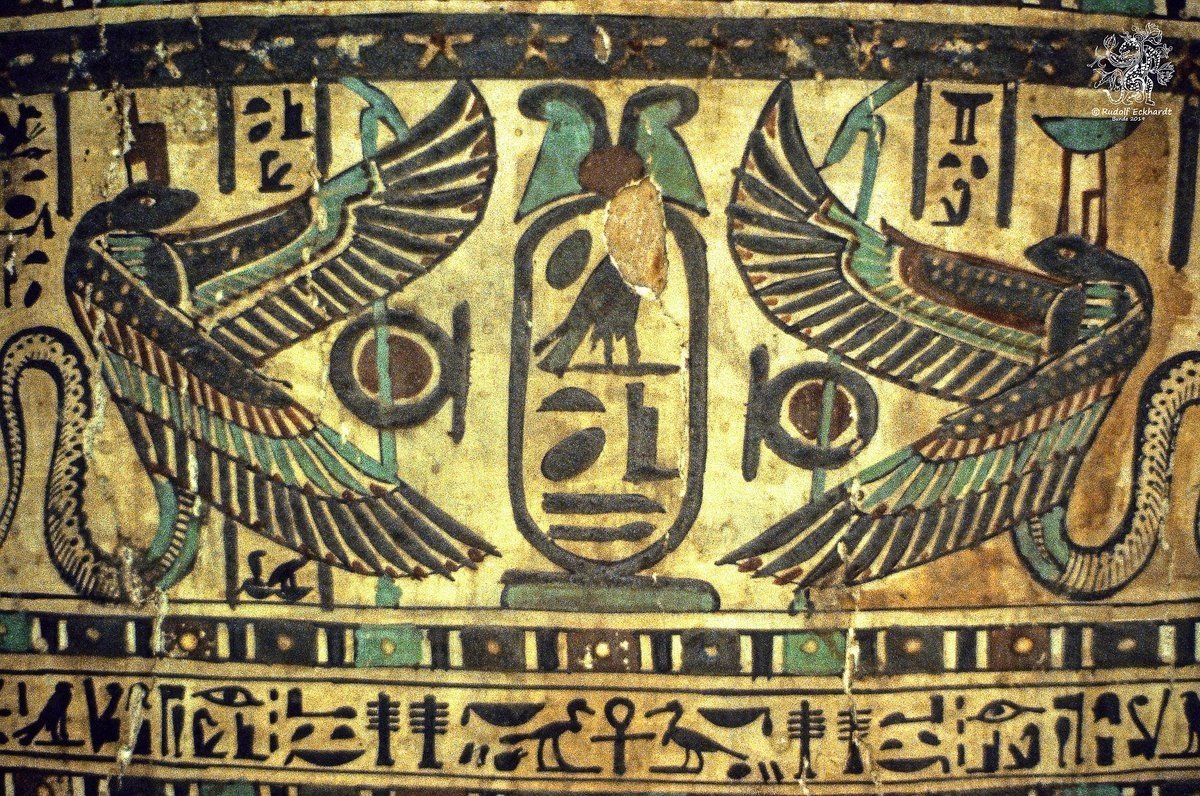
The burden of the beasts of the Negev: into the land of trouble and anguish, from whence come the young and old lion, the viper and fiery flying serpent, they will carry their riches upon the shoulders of young asses, and their treasures upon the bunches of camels, to a people that shall not profit them.
Yesha’yahu (Isaiah) 30:6 [Cepher]
They carry upon their beasts of burden on the way southward, into a land of oppression and distress, a place of the lion, and the whelps of the lionesses, and serpents, and of the flying basilisks—they carry upon the shoulders of their young cattle their treasures, and they bring upon the bunches of camels whatever is in their treasuries unto a people, that shall not profit them.
Yesha’yahu (Isaiah) 30:6 [Targum]
Both the Hebrew Masoretic and Aramaic Targum make a distinction between your typical creepy-crawly serpent and flying serpent. The Hebrew even tells us the non-flying serpent is a poisonous one—hence, viper. Therefore, you cannot claim that the burning serpent is simply a viper. There is more than meets the eye here. The Aramaic Targum takes this a step further and calls the flying serpent a basilisk. What I believe Yesha’yahu is telling us is that spiritual as well as physical serpents live in the wilderness, troubling the road to Egypt.
A comparable account can be related to Yahusha’s own infancy. When Yoceph, Mariyam, and the family made their escape to Egypt, we read the following account:
And having come to a certain cave, and wishing to rest in it, the blessed Mariyam dismounted from her beast, and sat down with the child Yahusha in her bosom. And there were with Yoceph three boys, and with Mary a girl, going on the journey along with them. And, lo, suddenly there came forth from the cave many dragons; and when the children saw them, they cried out in great terror. Then Yahusha went down from the bosom of his mother, and stood on his feet before the dragons; and they adored Yahusha, and thereafter retired.
The Infancy Gospel of Matthew 18
Okay, fine. Maybe these are only physical dragons and not spiritual ones. It’s difficult to tell. My point still stands. Spiritual entities, unclean ruach if you will, reside in the wild places of the earth. Yahusha even tells us so.
Now, when the satan goes out of a man he walks by difficult places, seeking rest, and he does not find it.
The Hebrew Gospel of Matthew 12:43
Translations taken from the Greek will stress ‘desert places,’ but ‘difficult places’ seems just as deserted to me.
Getting back to the seraphim dragons again. There’s a conspiracy you may have heard of regarding our reptilian overlords. Try not to roll your eyes too heavily, as they may get stuck like that one of these times, and that would be unhealthy. In the following text we are actually given a description of one such reptilian.
[I saw Watchers] in my vision, a dream vision… vacat… And behold, two (of them) argued about me and said…. And they were engaged in a great quarrel concerning me. I asked them: ‘You, what are you… thus…. [about me?’] They answered and said to me: ‘We have been made masters and rule over all the sons of men.’ And they said to me: ‘Which of us do you choose….’
I raised my eyes and saw one of them. His looks were frightening like those of a viper, and his garments were multi-colored and he was extremely dark …
And afterwards I looked and behold … by his appearance and his face was like that of an adder, and he was covered with … together, and over his eyes …
this Watcher: Who is he?’ He said to me: ‘This Watcher … and his three names are Belial, Prince of Darkness and Melkiresha’… vacat… And I said: ‘My Lord, what rule … ‘[And he said to me] … and all his paths are darkness, and all his work is darkness, and he is… in darkness … you sec. And he rules over all darkness… and I rule over all light and all…
The Vision of Amram
I probably should have told you it was about a Watcher or two in advance. Also, given some context to the passage before asking you to read it. Amram, you see, was the grandson of Levi and the father of Moshe. The book of Yashar gives us some details surrounding his present circumstances. The sons and grandsons of the twelve patriarchs began burying them in Canaan as they died, each in turn. Only Yoceph was kept in Egypt under lock and key, as a prophecy was made by Pharoah’s magicians that the entire land would go dark on the day of his removal. It was while Amram was on one such burial mission that war broke out between both countries, Egypt and Canaan. The border was closed, and Amram remained there, separated from his wife and family, for something like forty-one years.
It is there in Canaan where he had his vision of the two Watchers. The first Watcher is presented to Amram as Belial, Prince of Darkness. Recognize the name? I do. He’s none other than HaSatan. The other figure is somebody named Melchizedek. You might have heard of him. He’s the Prince of Light and King of Righteousness, but also a Watcher. Bet you never thought of Melchizedek as a Watcher before. And no, Melchizedek isn’t a reptilian, as it has already been explained in a past paper who the first Melchizedek is. He was Noach’s nephew. At any rate, Amram describes Belial as having the literal looks of a viper and the face of an adder. Not poetry. HaSatan, or rather Belial, is a Watcher but also a reptilian. But again, that shouldn’t surprise anyone, as he’s already described to us as a dragon in Revelation.
15 And the serpent cast out of his mouth water as a flood after the woman, that he might cause her to be carried away of the flood. 16 And the earth helped the woman, and the earth opened her mouth, and swallowed up the flood which the dragon cast out of his mouth. 17 And the dragon was wroth with the woman, and went to make war with the remnant of her seed, which keep the commandments of Elohiym, and have the testimony of Yahusha Ha’Mashiach.
Chizayon (Revelation) 12:15-17 [Cepher]
I chose this passage for a very specific purpose, as it seems kind of like a mud-flood event to me. Perhaps just a coincidence. Or perhaps not. The earth swallows up the waters before the entire world can be flooded. That is precisely what we are observing on every single continent, as entire cities (and really, pick any city older than 200 years) are buried under 12 to 20 feet of mud and sediment.
The proposition has already been given several times over; that the mud flood event lines up with the release of the Watchers, who are then described in Chanok as trampling over the cities like ravenous wolves. Is it possible that we are gazing in upon the very scene by which HaSatan was also released from prison, when the set-apart make their exit for the camp of Yah? Amazing how literal the Bible has become. It says right here that he then “went to make war with the remnant of her seed.” If we have woken up to the Truth of Yahuah’s Torah and crossed over as children of Yashar’el, then that’s us. Nobody else is at war with seraphim dragons but us. Better get your battle armor on, if you haven’t already.
We very well may have just seen the release of HaSatan and the Watchers from prison. What this means for us is, the unclean ruach and seraphim dragons are no longer relegated to the wilderness places, as they once were. It can truly be said at present that they are our reptilian overlords. But it wasn’t always so. For the remainder of this paper, I want to focus in upon the collapse of Mystery Babylon. Specifically, I want to ask the question, what happened to Babylon and her confederacy after the ushering in of Mashiach’s kingdom? Scripture tells us. The wilderness places became a haunt for dragons.
It says so right here.
18 AND after these things I saw another angel come down from heaven, having great power; and the earth was lightened with his glory. 2 And he cried mightily with a strong voice, saying, Babel the great is fallen, is fallen, and is become the habitation of devils, and the hold of every foul ruach, and a cage of every unclean and hateful bird. 3 For all nations have drunk of the wine of the wrath of her fornication, and the kings of the earth have committed fornication with her, and the merchants of the earth are waxed rich through the abundance of her delicacies.
4 And I heard another voice from heaven, saying, Come out of her, my people, that ye be not partakers of her sins, and that ye receive not of her plagues.
Chizayon (Revelation) 18:1-4
We will undoubtedly search Scripture for further confirmation, but really, that’s everything you need to know, right there. With the commencement of the Millennium, Babylon is destroyed. While the remainder of the world shares in the joys of Yahusha’s kingdom, the ruins of Babel then becomes “a habitation of devils, and the hold of every foul ruach.” Also, I want you to take a special note of the concluding phrase, “and a cage of every unclean and hateful bird.” Ask yourself, what sort of unclean bird is a hateful bird? Vultures, I suppose. Not exactly the happy go-lucky sort. But what if it’s also speaking of another species of bird? A non-physical bird, perhaps. Hold that thought.
There is one other phrase which needs appraisal. A voice from heaven says, “Come out of her my people, that ye be not partakers of her sins.” Babylon has already fallen. How could anyone still partake in her sins? It probably has something to do with the fact that Babylon has become the habitation of devils and unclean ruach. A stunning contrast, indeed. We should then probably ask ourselves, what would happen if some people chose not to come out of her? We just read the answer. They would receive her plagues. Before this is over, you shall see why Yahusha allowed these unclean ruach to live on in the desolate places, rather than simply destroying them, once and for all.
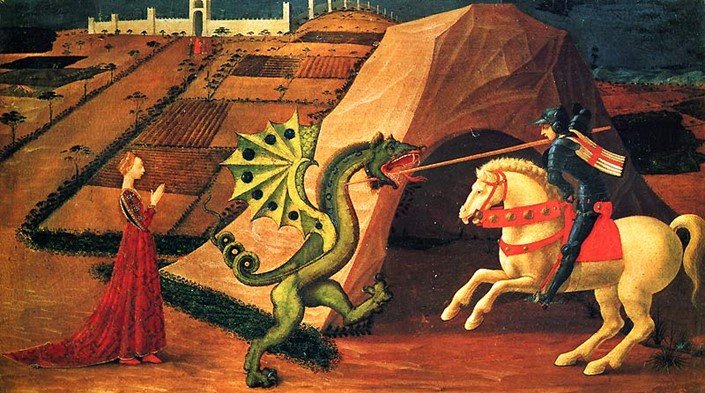
Scripture actually has plenty to say on Babylon after its fall. With that being said, let’s seek out a second witness.
42 The sea is come up upon Babel: she is covered with the multitude of the waves thereof. 43 Her cities are a desolation, a dry land, and a wilderness, a land wherein no man dwells, neither does any son of A’dam pass thereby.
Yirmeyahu (Jeremiah) 51:42-43 [Cepher]
Not exactly a second witness, as Yirmeyahu speaks nothing of unclean ruach. Still though, we can at least establish that the former kingdoms of HaSatan have become a desolation and a wilderness, by which no son of A’dam dwells therein. Reading on.
This is the rejoicing city that dwelt carelessly, that said in her heart, I am, and there is none beside me: how is she become a desolation, a place for beasts to lie down in! Everyone that passes by her shall hiss, and wag his hand.
Tsephanyahu (Zephaniah) 2:15 [Cepher]
Beasts. Hmmm, another added detail. Tsephanyahu tells us of Yirmeyahu’s desolated cities, only now beasts find rest in them. Also, it says that people do pass by. Or rather, somebody passes by—whoever “everyone” is. The point being, everyone who passes hisses and shakes their hands at the ruinous capitols of those who once compared themselves with the I Am.
Next witness.
30 Take a good heart, O Yerushalayim: for he that gave you that name will comfort you. 31 Miserable are they that afflicted you, and rejoiced at your fall. 32 Miserable are the cities which your children served: miserable is she that received your sons. 33 For as she rejoiced at your ruin, and was glad of your fall: so, shall she be grieved for her own desolation. 34 For I will take away the rejoicing of her great multitude, and her pride shall be turned into mourning. For fire shall come upon her from the Everlasting, long to endure, and she shall be inhabited of devils for a great time.
Baruk 4:32-35 [Cepher]
A dutiful inquiry will ask to see evidence of this so-called fire which came down and destroyed those cities. Oh, believe me, entire cities were melted. The evidence is there. You just have to look for it. Following those bread crumbs however would be a distraction from the topic at hand, as Baruk has escalated the severity of the situation. Ruinous Babylon has just been upgraded from being a desolation without people, or a desolation with beasts and any number of hissing passerbys, to one which is inhabited of devils. Still not seeing anything about dragons though. Let’s keep combing Scripture.
And they shall be ashamed: for it is a land of graven images; and in the islands, where they boasted. Therefore, shall idols dwell in the islands, and the young of monsters shall dwell in it. It shall not be inhabited anymore forever. As Elohim overthrew Sodom and Gomorrah, and the cities bordering upon them, said Yahuah: no man shall dwell there, and no son of man shall sojourn there.
Yirmeyahu (Jeremiah) 27:22 [LXX]
The destruction of Mystery Babylon is compared with the overthrow of Sodom and Gomorrah. We should probably expect to see lots of melted buildings then. And we do. But again, let’s not get distracted. Here we see the “young of monsters” dwelling within. Is that the same thing as saying the offspring of monsters? I don’t know. You tell me. It shouldn’t be too difficult to imagine that monsters do have babies. I mean, why wouldn’t they? Even monsters have reproductive organs. That being said, I think I know what the LXX is hinting at here, but at present, it’s just conjecture. I’m not quite ready to give it away quite yet. You’ll have to read what I think a little further ahead.
And Chatsor shall be a dwelling for dragons, and a desolation forever: there shall no man abide there, nor any son of A’dam dwell in it.
Yirmeyahu (Jeremiah) 49:33 [Cepher]
Ah, there it is! We’re back in Yirmeyahu again. The prophet certainly didn’t let us down this time. He says it. Dragons. I’ll let you look up the location of Chatsor, or rather Hazor, for yourself. When you do, remind yourself that it was a dwelling for dragons. Before you tell me it’s not yet a dwelling for dragons, pay attention to the fact that every place being described to us is not only ruinous, they were dug up out of the sand in the 1800’s or sometime thereafter. That tells us something. The prophecy being referred to was fulfilled.
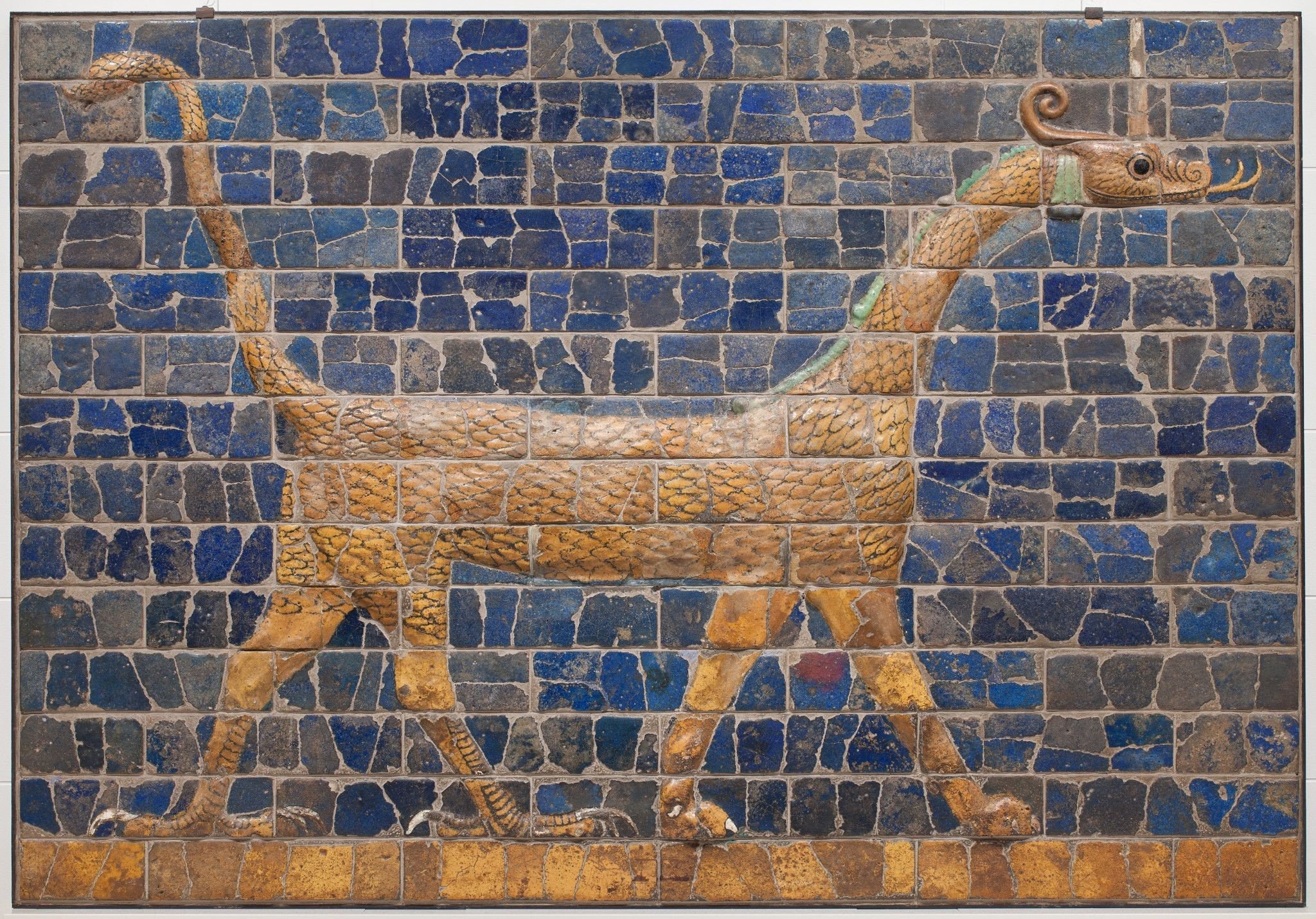
Another from Yirmeyahu reads:
And Babel shall become heaps, a dwelling place for dragons, an astonishment, and a hissing, without an inhabitant.
Yirmeyahu (Jeremiah) 51:37 [Cepher]
It says Babel shall become heaps. Now ask yourself, did Babel become heaps? Check. Babylon is in heaps. That means it has already become a dwelling place for dragons. I have included the picture of a dragon as represented on ancient Babylon’s Ishtar gate. Notice the bird-like talons for hind legs. A clue. Somebody on the Intel-net will surely demand evidence that such a dragon ever physically existed. If so, then you might as well demand scientific evidence for the presence of angels. Same thing. Because, while I do believe in the historical relevance of dragon animals, the subject of this paper is seraphim dragons. If you’re paying attention, the haunt which I’m suggesting is dragons of the fallen nature. During the Millennial Kingdom, only HaSatan and the 200 Watchers who descended upon Mount Hermon are described to us as imprisoned. But as we have already seen, there were others.
The wild beasts of the desert shall also meet with the wild beasts of the island, and the satyr shall cry to his fellow: the screech owl also shall rest there, and find for herself a place of rest.
Yesha’yahu 34:14 [Cepher]
And there shall meet one another, martens and wild cats, and demons, each shall sport with its companion: verily dryads shall dwell there, and they shall find rest for themselves.
Isaiah 34:14 [Targum]
The Cepher says screech owl. Most translations do. Must be an unclean bird then. How did Revelation describe them birds? They were hateful. Owls don’t exactly come across to me as hateful, but maybe my wires are crossed. The thing is though, the Hebrew word being used for “screech owl” is לִילִית. Or Lilith, if you’re Hebrew illiterate, and I am. That’s pronounced liyliyth. Strong’s Concordance 3917, for all-you fact checkers out there. It’s a feminine word. No other ancient source, be it Assyrian, Babylonian, Akkadian, or the other surrounding languages, refers to this word as anything but a night hag or night demon. A bird perhaps, but not a screech owl. Somebody’s screeching in the night, alright, and her name is Lilith.
The ASV says ‘night-monster.’ The BBE says ‘night-spirit.’ Many translations however leave it as it is and says ‘Lilith.’ The Aramaic Targum however drops another clue and tells us this Lilith character is actually a dryad. Just so we’re clear, a dryad is a nymph or nature ruach who lives in trees. By now my serial reader knows the earth is a spiritual realm, a womb really, and that ruach are in everything, including lightning. I have long been seeking a Scriptural reference to the inhabitation of ruach in trees, and I have just now found one.
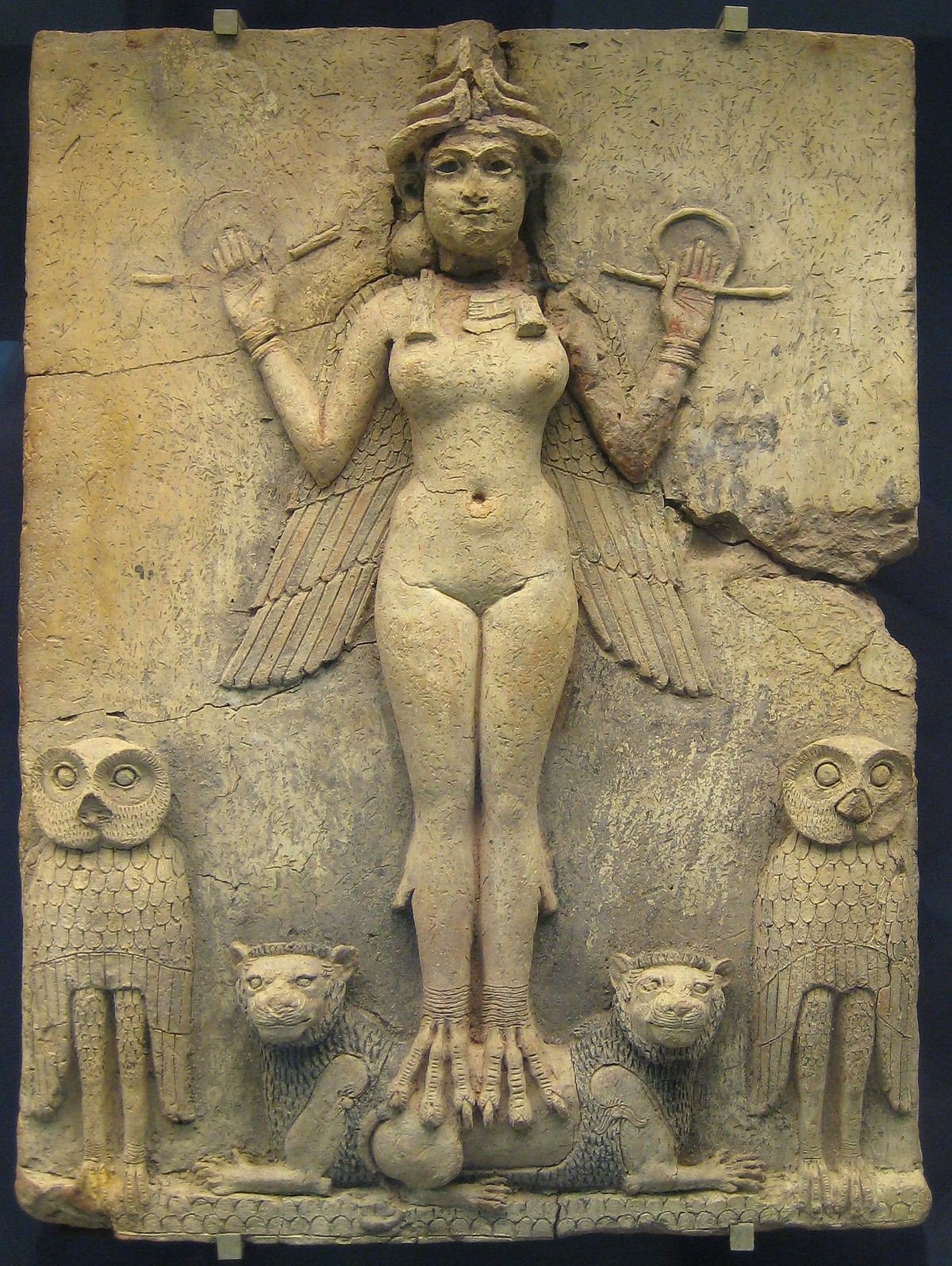
Wait, what’s this? It is a carved stone depicting a woman with angel wings. Is that a snake for a crown? Hard to tell. She’s definitely naked though. Looks to be a fertility goddess. Owls flank her on either side. Rather interesting because, as we have already seen, the word Lilith is sometimes translated as ‘screeching owl’, even in the ‘Epic of Gilgamesh.’ The Mesopotamian terracotta plaque is known to us today as the Burney Relief, though its far more appropriate title is ‘the Queen of the Night.’ It’s okay, you can say it. Lilith. Something’s definitely screeching in the night, alright.
From what I’ve so far been able to gather, Lilith makes yet another appearance in the Aramaic Targum. Let’s see if it delivers any further clues.
13 On the day at the beginning of the week, while his sons and his daughters were eating and drinking wine in the house of their eldest brother, 14 a messenger came to Job and said: “The cows were ploughing and the she’asses were grazing at their side, 15 when Lilith, the Queen of Sheba and of Margod, fell upon them suddenly and led them away, and they killed the young men, crowds of them, at the edge of the sword; I alone have escaped to tell you.
The Targum of Job 1:13-15
No, I don’t believe the Targum of Job is actually saying Solomon’s Queen of Sheba and Lilith are the same. Calling Lilith ‘the Queen of Sheba’ may in fact be little different than describing the Prince of Persia who held the archangel Miyka’el back for twenty-one days. We are simply being told about the spiritual entities who take an active part in the physical realm. Thus, given everything we’ve just experienced, Yesha’yahu might literally read:
And desert beasts shall meet with the island beasts, and a goat-demon [satyr] shall call to his neighbor; surely there Lilith shall repose, and she shall find a resting place for herself.
Yesha’yahu 34:14
Something I forgot to comment upon in Yesha’yahu 34:14 is the mention of a goat-demon. Most translations prefer relegating it simply to a demon, so as not to have people poking their noses where it doesn’t belong, but the Cepher actually translates it accurately here. The goat-demon is a satyr. Half man, half goat. You might know him as the kind Mr. Tumnus, but the ancient world knew him as Pan. Why are Pan and Lilith hanging out together. Probably up to no good.
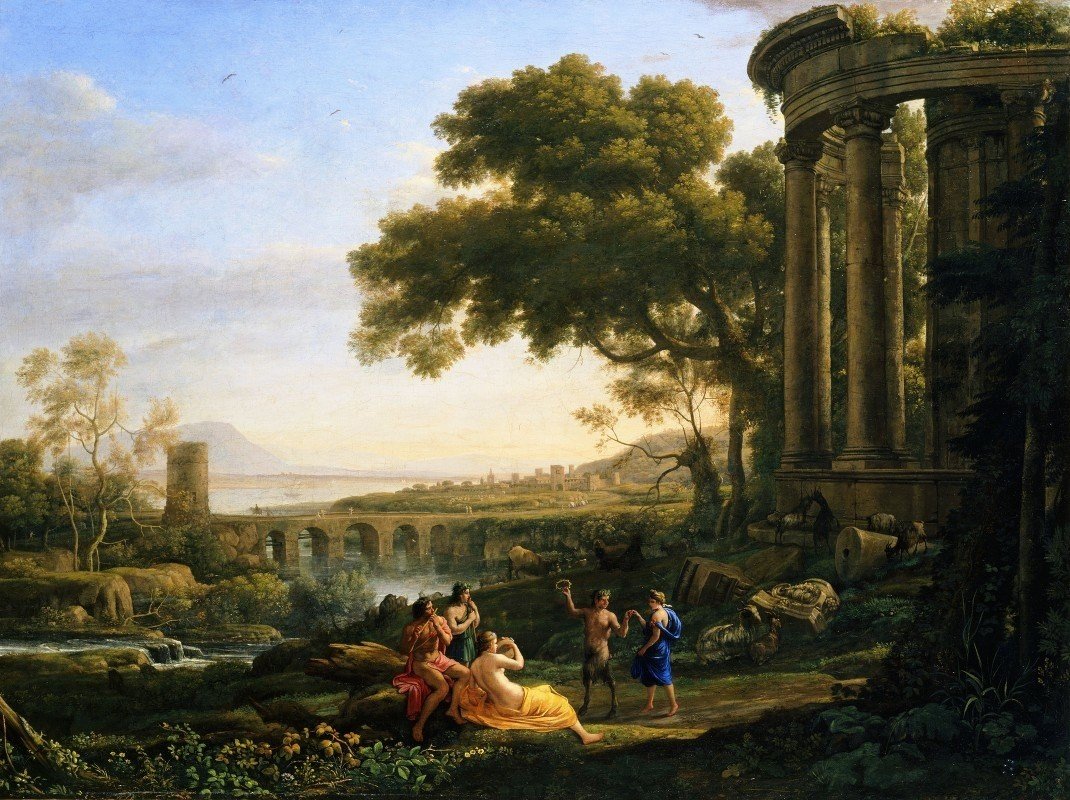
What do we have here? It’s a painting. A Baroque painting. More importantly though, we see a ruinous landscape inhabited by a nymph and a satyr. To erase any doubts, its title even says as much. ‘Landscape with Nymph and Satyr Dancing.’ The Intel-net tells me its artist is somebody named Claude Lorrain, and is described to us as a French painter, draughtsman and etcher of the Baroque era. My serial reader undoubtedly knows the satyr as the child-rapist Pan. Is the nymph Lilith then? We are not told. Truth in plain sight, perhaps, as we’re pressed to ask ourselves if we’re gazing in upon a literal scene from the book of Yesha’yahu. A satyr and a tree-ruach, identities unknown, have found rest among the haunts of civilization. Sounds literal to me. They are now enacting rites of the Mystery religion. And if I’m not mistaken, they’re making a neophyte out of someone. I knew it. Up to no good.
Lilith’s place in this story serves its purpose. The story of her origin can be found in ‘The Legend of the Jews’, but most assuredly can be traced elsewhere. I’ve already hinted at that fact, but presently, you’ll have to do that digging for yourself. I remind you that ‘Legend of the Jews’ is based upon tradition—officially speaking. I’m not saying Lilith was the first wife of Adam. Rather, I’m simply laying out the possibility. She may very well have been. I don’t really know. Either she was or she wasn’t. Which is the lie—who knows? I’ve never lost any sleep over it. All I can do is report on this stuff. What we are doing here, you see, is researching. After another day of backbreaking work in the mine, I present to you the shiny stuff and you decide whether its gold or fools’ gold. That being said, I will probably be flogged for providing the same account side-by-side with ‘The Aleph Bet of ben Sira’, given the source material, but I simply don’t care anymore. In a post mud flood society, you can’t dig for the Truth unless you’re willing to get your hands dirty. I therefore present to you the story of Adam and Lilith.
The Divine resolution to bestow a companion on Adam met the wishes of man, who had been overcome by a feeling of isolation when the animals came to him in pairs to be named. To banish his loneliness, Lilith was first given to Adam as wife. Like him she had been created out of the dust of the ground. But she remained with him only a short time, because she insisted upon enjoying full equality with her husband. She derived her rights from their identical origin. With the help of the Ineffable Name, which she pronounced, Lilith flew away from Adam, and vanished in the air. Adam complained before God that the wife He had given him had deserted him, and God sent forth three angels to capture her. They found her in the Red Sea, and they sought to make her go back with the threat that, unless she went, she would lose a hundred of her demon children daily by death. But Lilith preferred this punishment to living with Adam. She takes her revenge by injuring babes—baby boys during the first night of their life, while baby girls are exposed to her wicked designs until they are twenty days old. The only way to ward off the evil is to attach an amulet bearing the names of her three angel captors to the children, for such had been the agreement between them.
The woman destined to become the true companion of man was taken from Adam’s body, for “only when like is joined unto like the union is indissoluble.” The creation of woman from man was possible because Adam originally had two faces, which were separated at the birth of Eve.
The Legend of the Jews 1:2:42-43
“The angels who are in charge of healing are Sanoy, Sansenoy and Semangel. While God created Adam, who was alone, He said, ‘It is not good for man to be alone’ (Genesis 2:18). He also created a woman, from the earth, as He had created Adam himself, and called her Lilith. Adam and Lilith immediately began to fight. She said, ‘I will not lie below,’ and he said, ‘I will not lie beneath you, but only on top. For you are fit only to be in the bottom position, while I am to be the superior one.’ Lilith responded, ‘We are equal to each other inasmuch as we were both created from the earth.’ But they would not listen to one another. When Lilith saw this, she pronounced the Ineffable Name and flew away into the air. Adam stood in prayer before his Creator: ‘Sovereign of the universe!’ he said, ‘the woman you gave me has run away.’ At once, the Holy One, blessed be He, sent these three angels to bring her back.” Said the Holy One to Adam, ‘If she agrees to come back, what is made is good. If not, she must permit one hundred of her children to die every day.’ The angels left God and pursued Lilith, whom they overtook in the midst of the sea, in the mighty waters wherein the Egyptians were destined to drown. They told her God’s word, but she did not wish to return. The angels said, ‘We shall drown you in the sea.’“‘Leave me!’ she said. ‘I was created only to cause sickness to infants. If the infant is male, I have dominion over him for eight days after his birth, and if female, for twenty days.’ “When the angels heard Lilith’s words, they insisted she go back. But she swore to them by the name of the living and eternal God: ‘Whenever I see you or your names or your forms in an amulet, I will have no power over that infant.’ She also agreed to have one hundred of her children die every day. Accordingly, every day one hundred demons perish, and for the same reason, we write the angels names on the amulets of young children. When Lilith sees their names, she remembers her oath, and the child recovers.”
Otzar Midrashim: The Aleph Bet of ben Sira
What really stuck out to me here is that Lilith is described as the mother of demons. Rather than filling the role of the Matriarch of humanity, by which the ruachs created before Yah’s throne might ultimately be conceived and born in their allotted hour, Lilith wanted to create ruach of her own. Demons. In return, the Most-High promised to handicap their daily population growth, perhaps to compensate for the number of Adam’s sons on earth. It’s all conjecture—obviously. Again, you are free to roll your eyes. I’m only the reporter. Her stated role as matriarch though should call your attention to the fact that we have already read how the wastelands would become the haunts of little monsters and devils. During the Millennial Kingdom, it might be said that the Queen of Sheba was ruling over her children.
The other half of the equation in Yesha’yahu 34:14 is the satyr. You already know that Pan was a satyr. Well, what if I told you that the satyr was Ham? Same Ham. The one and only. Noah’s son. Pan and Ham are the same. The following text is once again questionable. In other chapters, red flags may be planted on the Roman propaganda. ‘The Travels of Noah into Europe’ makes historical claims however which are indeed stunning. Continuing on with the sons of Cain tradition [hint, serpent seed], the sons of Ham became the toppler of thrones and kingdoms on every continent.
19 Having thus touched the death of this good Patriarch Noe, it shall not be now impertinent something to remember and speak of the wicked and abominable life of his son Cham, which although of itself it be worthless of any recapitulation or recital, yet to descend to the line all genealogy of the Lybian, Hercules the Great, it cannot be well omitted: from which Hercules, Dardanus the first founder and erector of Troy, descended and came.
20 It hath been already specified, how Noe dividing the universal earth unto his children, and how Cham abounding in all vices and detestable courses, notwithstanding was not deprived of his portion, but had his right of inheritance justly allotted unto him, which was the third part of the world, and particularly Africa to the hither part of Egypt; for which countries he was commanded by his father to depart, with his wife Noegla, and five and thirty rulers (which is as much to say, as the chiefs of family of his blood and house) as also with all their children and issue: which was accordingly performed, and presently he established himself as king and Saturn of Egypt, where he erected and build a city called Chem-Myn: and among them also, he himself was called Pan, and Silvanus, which people likewise (so engendered and issued of that family) to honor and worship him the more, and to show their love unto him, lived in all impious and ungracious manner, perpetrating most odious and soul-damming villainies, affirming publicly. That men ought lawfully to have the company of their own mothers, sisters, and daughters, in all lusts and concupiscence of the flesh; and other many most inhuman and shameful acts, not to be recited. And to show that they gloried and boasted in the wickedness of such their king and ruler, they entermed him by the name Cham Esenuus, which signified their infamous god Pan. And thus he ruled in Egypt long time, even unto the six and fiftieth year of the reign of Iupiter Belus, the second king of Babylon: in which year he began to travel, and came into Italy (which was then called Kytim) to his brother Comerus Gallus, the first king of that country; after whose death Cham presently usurped and undertook that mighty government who instead of virtuous instructions and gold laws, in which all other princes round about him, his kinsmen (commanding Germany, Spain, and France) had instructed and taught their people, clean contrary infected the youth of Italy with all manner of impieties, incivility, and corruptible vices: persuading them (being of themselves well addicted) to usury, robbery, murder, poisonings, and the study of the Magic art, who by reason of his own great skill therein, was surnamed Zoroastes, and was the first inventor and practicer of that of that vile and diabolical learning, of the use of which he composed and writ many books, and he was called generally throughout the world, Cam Esennus, id est Cam infamis, & impudicus, propagator Some have thought, That the Turk for those such like causes, is called in his letters patents, le grand Cam de Tartaria.
The Travels of Noah Into Europe 19-20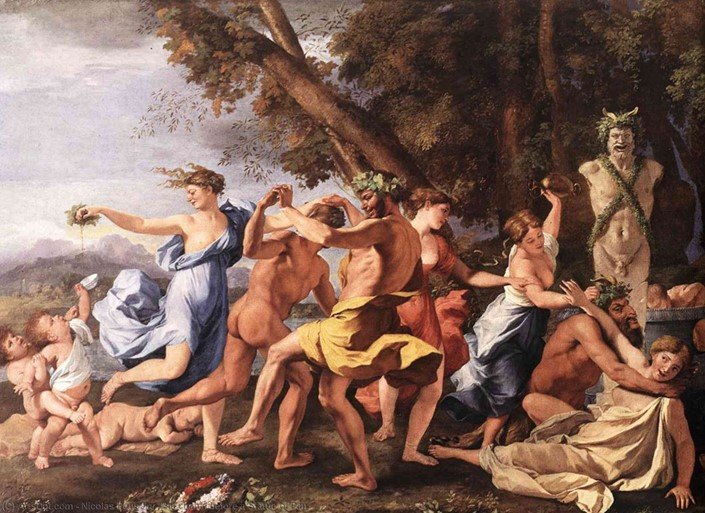
That’s the other thing about ‘The Travels of Noah into Europe.’ We are given several quips about Tartaria. I wish I could pause and comment upon that more, but we’ve got other matters to attend to. Actually, I hope to conclude our discourse over the next few pages. But before doing so, there’s an interesting passage from the book of Yovheliym (Jubilees) that deserves tending to, as I expect it will help fill in the missing details of the overall narrative.
8 IN the twenty ninth jubilee, in the first week, in the beginning thereof Arpakshad took to himself a woman and her name was Rasu’eya, the daughter of Shushan, the daughter of Eylam, and she bore him a son in the third year in this week, and he called his name Qeynan. 2 And the son grew, and his father taught him writing, and he went to seek for himself a place where he might seize for himself a city. 3 And he found a writing which former generations had carved on the rock, and he read what was thereon, and he transcribed it and sinned owing to it; for t contained the teaching of the Watchers in accordance with which they used to observe the omens of the sun and moon and stars in all the signs of heaven. 4 And he wrote it down and said nothing regarding itl for he was afraid to speak to Noach about it lest he should be angry with him on account of it.
Yovheliym (Jubilees) 8:1-4
We have already established that the Watchers were reptilian, which is to say, the same as seraphim. And where did this Qeynan fellow find their writings again? In the waste places. With Qeynan, the religion of the Watchers carried on.
There is a point to this exercise. Imagine Yahusha HaMashiach physically ruling over the face of the earth. The beast has been thrown into the lake of fire. Mystery Babylon has been overturned and left to ruin. The devils and dragons have been relegated to those wastelands however for a purpose. Elsewhere, mankind is still sinful by nature. Torah however is the supreme law of the land. In that Law we are instructed not to invoke the names of any other elohim but Yahuah, the Most-High.
And in all things that I have said unto you be circumspect: and make no mention of the name of other Elohiym, neither let it be heard out of thy mouth.
Exodus 23:13
The idea is, if the land were purged of all other elohim, including unclean ruach, then children and future generations of children would grow up knowing nothing about them—naturally. It would be very difficult indeed to invite them into a clean space if the inhabitants of the land knew nothing about unclean living. Being set apart would be the standard, just as it is in heaven. In those regards, we can see Torah in action with the following passage.
And it shall come to pass in that day, says Yahuah Tseva’oth, that I will cut off the names of the idols out of the land, and they shall no more be remembered: and also, I will cause the prophets and the unclean ruach to pass out of the land.
Zakaryahu (Zechariah) 13:2 [Cepher]
There it is. During the Millennial Kingdom, there were no unclean ruach in the land. It says there were also no prophets. I take that to mean there were no false prophets in the land; only speakers of Truth; as the kingdom had taken the broom to everything of deceit. That is not to say that false prophets could not be found anywhere in creation. It simply means they could not be learned from within the land, as all surviving false prophets would the made the move with the unclean ruach into the outer rim of the kingdom. On a side note, it never says the sons of Cain could not be found in the wastelands.
Well, what would happen if you told humanity, or rather, the sons of Adam, not to go into the whereabouts of the wasteland? In say, the ruins of ancient Egypt and Babylon. People would be tempted to go—naturally. They would want to explore the windswept ruins for themselves, just to see what it was exactly that the King had forbidden. There they would meet the monsters and the devils. The nymph and the satyr. Dragons of old. Fallen angels. Lilith. Pan. Watchers. Seraphim. Like Qeynan after the flood of Noach, they would then be instructed by them. Also, like Qeynan with Noach, they might return to society and neglect telling anyone. They would then have hidden knowledge.
But what if those individuals with so-called enlightenment began instructing others in ancient occult practices? Torah tells precisely what to do. Follow along.
13 IF there arise among you a prophet, or a dreamer of dreams, and giveth thee a sign or a wonder, 2 And the sign or the wonder come to pass, whereof he spoke unto you, saying, ‘Let us go after other elohiym, which thou hast not known, and let us serve them;’ 3 You shalt not hearken unto the words of that prophet, or that dreamer of dreams: for Yahuah Elohaykem proves you, to know whether ye love Yahuah Elohaykem with all your heart and with all your soul. 4 Ye shall walk after Yahuah Elohaykem, and fear him, and keep his commandments, and obey his voice, and ye shall serve him, and cleave unto him.
5 And that prophet, or that dreamer of dreams, shall be put to death; because he hath spoken to turn you away from the Yahuah Elohaykem, which brought you out of the land of Mitsrayim, and redeemed you out of the house of bondage, to thrust you out of the way which Yahuah Elohaykem commanded you to walk in. So shall you put the evil away from the midst of you.
Devariym (Deuteronomy) 13:1-5 [Cepher]
The answer is, the person who teaches others to follow any other elohim but Yahuah should be put to death. Then again, what if the emissaries of Yahusha’s kingdom became lack in judgement? A transgression here. A transgression there. Last decades tolerance becomes next decades norm. Turn a blind eye to justice and the little white lies that perverts it. And what if that said individual who had learned firsthand knowledge from the dragons and the devils of the wasteland were, say, an artist? Or how about a musician? An architect or a Master Mason even. Scribe? What would then happen to Yahusha’s kingdom? If judgement were not enacted and the worship of the serpent not nipped in the butt, Truth itself would be marred. Holy would be mixed with the profane. Mankind would once again be pressed with the age-old decision: to choose that day whom they would serve. You probably know where this is going, as history has a habit of repeating itself. Mankind has a penchant for rebellion.
You will ask me why Yahusha HaMashiach would allow the teachings of other elohim to enter his kingdom. It says right there in Devariym 13 that Yahuah does it in order to prove you, “to know whether ye love Yahuah Elohaykem with all your heart and with all your soul.”
And if you’ve been following the mud flood narrative, then you know precisely what happens next. Those who chose the curse rather than the blessing were either destroyed or tossed out of Yah’s camp when HaSatan and the Watchers were released from prison. The great reset. We’ve all seen the photos. They were left to blindly wander the vacant cities and the magnificent buildings that their forefathers had built in the light of a universal government, assigned now to an inferior technology and a past narrative which deceptively speaks of a darkened age. Those of us just now waking up to the Truth of Yahuah’s Law are the descendants of rebels. They did not heed to Yahuah’s warning when he said:
8 You shall not make you any graven image, or any likeness of anything that is in heaven above, or that is in the earth beneath, or that is in the waters beneath the earth. 9 You shall not bow down yourself unto them, nor serve them: for I Yahuah Elohayka am a jealous El, visiting the inequity of the fathers upon the children unto the third and fourth generation of them that hate me, 10 And showing mercy unto thousands of them that love me and guard my commandments.
Devariym (Deuteronomy) 5: 8-10 [Cepher]
